
Detectives perplexed by mysterious Oregon cattle mutilations
 Cattle are a familiar site in Oregon fields.LC-
Cattle are a familiar site in Oregon fields.LC-
3,027
shares
By Garrett Andrews, The Bulletin
The udders appeared to have been removed with precision — straight, even cuts, as if made by a sharp object.
The reproductive systems had been cut out cleanly as well, and without disturbing other organs.
There was no indication of predator activity and perhaps strangest of all, scavenging animals appeared to have hardly touched these six cow carcasses found in a seven-day span this year on ranchland in rural Crook County.
Detectives with the Crook County Sheriff’s Office, longtime ranchers and a Prineville veterinarian who reviewed evidence from an ongoing case say they’re stumped by the “unnatural” deaths.
But the mutilated cattle might be more ordinary than they seem, according to Brian Dunning, a Bend-based podcaster committed to deflating wild claims.
“This reads like a very typical case,” he said.
Crook County Sheriff John Gautney said his office has no leads but cautioned there’s “no reason to panic.”
“We’ve had cases like this over the years,” Gautney said. “They seem to come in groups and then go away. We are not speculating on how these are happening, as we try to keep an open mind and look at all possibilities.”
Mutilated cattle have been reported in the American West since at least the 1960s. There have been multiple recent cases of bull mutilations in Harney, Wheeler and Umatilla counties in Eastern Oregon. But now, beef cattle have turned up dead in the remote ranchlands outside Prineville bearing signs common to the cattle mutilation phenomenon.
The current string of cases began Feb. 27, when Crook County Sheriff’s Office deputy Scott Durr was dispatched to suspicious circumstances at the 96 Ranch on SE Van Lake Road. Owner Rickey Shannon said one of his herd had been discovered dead two days earlier with an odd cut down its spine.
Shannon, who lives on the ranch with his two sons, reported no predators or birds had touched the cow. There were no tracks, and no blood surrounding it. The cow’s left cheek, tongue and three of its teats had been cut away cleanly. But the eyes, usually the first body part to be scavenged after death, were untouched. There were no bullet holes and a scan of the cow by a metal detector turned up none.
The cow was about 200 yards from the road, near the edge of a field and some juniper trees. There were no vehicle tracks near the dead animal, no footprints of any kind.
The mystery deepened a few days later. On March 4, Casey Thomas, manager of the GI Ranch on Lister Road in Paulina, reported that one of his herd of around 5,000 appeared to have suffered a strange death.
Crook County detective Javier Sanchez arrived to find a deceased Black Angus cow lying on its side. Hair had been removed near the stomach. All four udders were cut off and its left cheek, tongue and sex organs removed. Between the front legs an uneven patch of hair was missing and in the middle was a prick mark, Sanchez wrote in his report.
The next day, Crook County’s Sgt. Timothy Durheim was dispatched to a report of a wolf kill at the McCormack Ranch on SE Bear Creek Road. But it was apparent no wolf took down this cow.
Durheim noted several straight incisions on the animal. One udder had been removed and a circular cut was made around the anus and the reproductive organs removed without puncturing the gut. The left cheek, left eye and tongue had been removed.
“Again, I noted straight, clean incisions where the cheek had been,” Durheim wrote in his case report.
Durheim examined the carcass and found a puncture wound between the neck and shoulder. He found no bite marks.
“There were no apparent animal or human tracks immediately surrounding the carcass, and only minimal blood in the area,” Durheim wrote. “I know from personal experience that if an animal is killed or scavenged by predators, there is typically a large bloody messy area surrounding the carcass.”
On March 6, Casey Thomas called police back to report finding another dead cow bearing the same strange injuries. This one was more badly decomposed than the first but its left cheek was also removed and a 2-inch patch had been cut into the hair on its neck.
Detectives took photos of the dead cows to Prineville veterinarian Dr. Taylor Karlin for her perspective. She agreed the deaths appeared unnatural and her opinion was included in a search warrant request filed in the case to scan for cell phone activity near where the cows were found.
Charges in any of the cases could include trespassing and aggravated animal abuse. With the cattle valued at $1,250 to $1,400 each, criminal mischief might also be charged.
As a vet with an interest in large animals, Karlin has performed many post-mortem examinations on deceased livestock. When, and if, another mutilated cow turns up in Crook County, Karlin has agreed to perform an appropriate necropsy so she can personally examine a fresh specimen if another turns up.
“I wish I had an answer,” she said. “We’re kind of at a loss.”
One possible explanation is these were, in fact, natural deaths
Podcast host Dunning’s long-running show Skeptoid devoted an episode to debunking cattle mutilation in 2015. Dunning, who read the 28-page search warrant request, called the recent Crook County case typical of numerous accounts often attributed to aliens or satanic rituals.
“This is almost certainly the same kind of bird predation we’ve seen in so many similar cases,” he wrote to The Bulletin. “In my opinion, there is nothing here that suggests anything but normal and expected bird predation had occurred, and … no justification for a search warrant to seek out an apocryphal human responsible for the wounds.”
Dunning said he’s learned there’s actually a short window of time between when the animal dies and when its body is scavenged when it’s obvious what killed the animal.
“Most particularly birds, and also some insects, will always go first for the exposed soft tissue: eyes, tongue, lips and mouth area, genitals. The animal is dead with zero blood pressure so there is never significant bleeding from post mortem wounds. The body is in the process of drying and decaying, so skin pulls tight from around the excised area, giving the impression of a perfect surgical cut.”
Karlin is awaiting the results of liver and blood samples she’s sent away for lab testing. Police have sent hair samples to the state crime lab on the chance they don’t belong to the bovine.
Last year, the FBI in Oregon started receiving questions about cattle mutilations in Central and Eastern Oregon, according to Beth Anne Steele, spokesperson for the FBI Portland office. But despite sporadic media inquiries, the office does not have a current role in the cattle mutilation investigations, Steele wrote to The Bulletin.
oregonlive.com
Mysterious historical cases of real werewolves
Brent Swancer
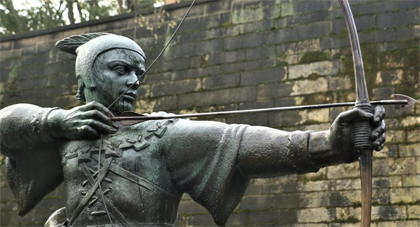 Brent Swancer | Mysterious Universe
Brent Swancer | Mysterious Universe
Brent Swancer is an author and crypto expert living in Japan. Biology, nature, and cryptozoology still remain Br…
There is perhaps no other monster of legend more pervasive in the human psyche than that of the werewolf. Such legends can be found in the myths and lore of people all over the world, and generally deal with those who have been cursed with the ability to metamorphose into wolves. In old English they were called the werwulf, and in Greek mythology they were called the lycanthropes, coming form the words “lykos” (wolf), and “thropos,” (man), but whatever they were called they have always been terrifying, and have wormed their way into lore and fiction. One may be left to ask, were there ever real werewolves in this world? Did such creatures ever really stalk the night? Here we will look at some cases through history of people who were widely seen to be actual werewolves, and their bizarre stories.
For our first tale we go way back to the year 1502, when according to lore a man named Pierre Burgot was out tending his sheep in Poligny, in the Franche-Comté region of France, when he was approached by a trio of mysterious men on horseback. The strangers were dressed all in black, and promised that his sheep would be protected from predators forevermore if he were to only renounce God and accept them as his new masters. Burgot accepted, and he was later approached by one of the riders, a man named Michel Verdun, who said he was actually a werewolf, and offered to give Burgot the same power to turn into a powerful wolf as well, which he also accepted.
The two men then began a reign of terror in the region, turning into wolves to hunt down unwary travelers, including women and children, and attacking and eating them with animalistic ferocity. They continued this killing spree until one day a traveler was passing the area when he was attacked by an enormous wolf. In this case he managed to fend off the attack, wounding the animal and following its trail of blood through the woods. At the end of this trail of blood, rather than the wolf he expected to see there lay Burgot, gravely wounded and in human form. He was captured and he, along with Verdun and another supposed werewolf named Philibert Montot, was burned at the stake. It is interesting in that the man who apprehended him insisted that he had at first been a wolf. Did these men really have the power to change into wolves or is this just an embellishment? Who knows?
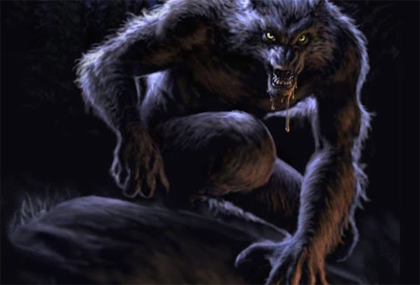 In 1573 there was another notorious werewolf on the loose in France, this time in the area of the town of Dole. The man known as Gilles Garnier was seen by the people of the area as a reclusive hermit who lived out in the woods, but this was not all there was to him, as he was supposedly a werewolf as well. His first victim was allegedly a 10-year-old girl who he set upon in a vineyard, killed, and partially devoured. His next potential victim was another young girl who he bit and clawed at, but was unable to kill before he was chased off by farmers. Undaunted, he soon attacked a boy in a nearby area, ate parts of him, and tore a leg off to save for later. On this occasion he was actually seen as a wolf by some locals and tracked, after which he resumed his human form right before their startled eyes. Garnier was captured and brought to trial, where he confessed to being a werewolf and killing four children, after which he was burned alive for his crimes. Again, there was much testimony that he had actually been a wolf before being captured, so what are we to make of this?
In 1573 there was another notorious werewolf on the loose in France, this time in the area of the town of Dole. The man known as Gilles Garnier was seen by the people of the area as a reclusive hermit who lived out in the woods, but this was not all there was to him, as he was supposedly a werewolf as well. His first victim was allegedly a 10-year-old girl who he set upon in a vineyard, killed, and partially devoured. His next potential victim was another young girl who he bit and clawed at, but was unable to kill before he was chased off by farmers. Undaunted, he soon attacked a boy in a nearby area, ate parts of him, and tore a leg off to save for later. On this occasion he was actually seen as a wolf by some locals and tracked, after which he resumed his human form right before their startled eyes. Garnier was captured and brought to trial, where he confessed to being a werewolf and killing four children, after which he was burned alive for his crimes. Again, there was much testimony that he had actually been a wolf before being captured, so what are we to make of this?
Moving on later into the 16th century we have a case from 1598, for an account that involves allegedly not one, but a whole family of werewolves. The setting is the Jura region of eastern France, where one spring day 15-year-old Benoist Bidel was out with his sister picking fruit in the scenic countryside. Benoist would claim that he had climbed a tree to reach some fruit, and that was when a huge wolf with human hands had lunged at the two from the wilderness and attacked the girl. Benoist had tried to fight the beast off with his knife, but it would kill his sister and leave him grievously wounded with a serious bite to the neck before being chased off by some nearby villagers who had come to investigate the ruckus. The boy wouldn’t make it, dying at his father’s cabin just a few days later, but this story is far from over.
In the coming days it was whispered that a werewolf had attacked the children, due to the description given by the boy of it having had hairy, human-like hands. Since the crowd that had driven the wolf away had left a distinctive wound upon the beast, there was attention paid to anyone who had a similar wound or scar, and they found it in one mysterious village woman named Perrenette Gandillon. This was enough to bring a lynch mob to her place, where she was dragged out kicking and screaming into the night and executed without a trial. They weren’t even done yet, as her whole family was then accused of witchcraft, and there were many, including the witch hunter Henri Boguet, who would claim to have executed hundreds of werewolves, who claimed to have seen the family walking about at night on all fours. Indeed they were said to pace within their prison cells on all fours and pant like animals. The brother and sister of Perrenette were tortured, whereupon the brother, Pierre, admitted to being a werewolf, and this was enough to get him and his sister burned at the stake. Pierre’s son also admitted to turning into a wolf and killing goats, which got him killed as well. Boguet would later write of the whole “Gandillon Werewolves” incident in his 1602 manuscript Discours des Sorciers.
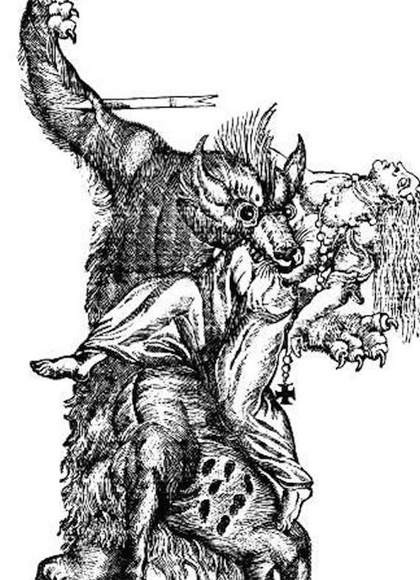 Indeed, 1598 seems to have been the year of the werewolf, because another high profile case comes from the same year, also in France, near the city of Châlons, in the Champagne region of the country. The werewolf in this case by day took the human form of a tailor in the town, who lured in young children with candies only to slit their throats and devour their flesh. At night, he would allegedly transform into a wolf and hunt for victims in the surrounding countryside, and he was finally brought to justice when barrels of human remains were found sequestered away within his cellar. He was, of course, burned at the stake.
Indeed, 1598 seems to have been the year of the werewolf, because another high profile case comes from the same year, also in France, near the city of Châlons, in the Champagne region of the country. The werewolf in this case by day took the human form of a tailor in the town, who lured in young children with candies only to slit their throats and devour their flesh. At night, he would allegedly transform into a wolf and hunt for victims in the surrounding countryside, and he was finally brought to justice when barrels of human remains were found sequestered away within his cellar. He was, of course, burned at the stake.
Yet again in 1598 we have the case of Jacques Roulet, who was a homeless wanderer passing through Angers, Western France, at the time with his brother and cousin, all of whom were allegedly werewolves. They might have successfully gotten through undetected if it were not for the discovery of the horribly mutilated body of a young boy found in the woods by some local peasants. The kill looked fresh, and with some looking around there were found to be two massive wolves lurking about, although they fled before they could be engaged. As the group pursued the wolves, it is said that a tall figure dressed in filthy, tattered clothes had then stepped from the wilderness, covered with blood and entrails and in a daze.
The bloodied stranger was captured and brought to town under suspicion of being a werewolf, and it was soon found that his name was Jacques Roulet, and that he and his companions had been given the power to change into a wolf by the Devil himself. They were of course all convicted of being werewolves, but Jacques took the unusual move of appealing this decision, claiming that he had been forced to confess with torture. This would apparently work (why didn’t all accused werewolves try this?) and his sentence was changed to two years in an insane asylum. Hey, it’s better than being burned at the stake.
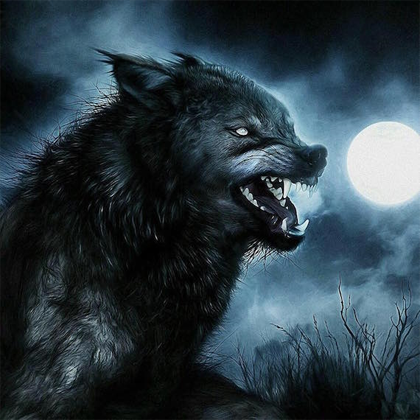 Also in the late 1500s we have a perhaps much more well-known case from the rural village of Bedburg, Germany. Here there lived a wealthy farmer by the name of Peter Stubbe, who in 1582 was a mostly well-respected and beloved member of the community, but this would change and devolve into one of the bloodiest werewolf cases in history. According to the lore, Stubbe made a pact with the Devil, in which he “requested that at his pleasure he might work his malice on men, Women, and children, in the shape of some beast,” and to this end he was supposedly given a girdle that allowed him to transform into a wolf at will.
Also in the late 1500s we have a perhaps much more well-known case from the rural village of Bedburg, Germany. Here there lived a wealthy farmer by the name of Peter Stubbe, who in 1582 was a mostly well-respected and beloved member of the community, but this would change and devolve into one of the bloodiest werewolf cases in history. According to the lore, Stubbe made a pact with the Devil, in which he “requested that at his pleasure he might work his malice on men, Women, and children, in the shape of some beast,” and to this end he was supposedly given a girdle that allowed him to transform into a wolf at will.
The oddities started when farmers in the region began to find their livestock mutilated and mauled by some powerful, fierce creature, at first suspected to be a roving pack of wolves. This quickly graduated to human beings, and there were several unexplained murders of people who had had their throats savagely ripped out, as well as people vanishing, which combined with sightings of a large, wolf-like shape in the shadows of the woods further cemented the idea that a wolf or wolves were on the loose. However, it soon became known that this was no wolf, but rather a werewolf running around in his “animal form,” during which time he would walk about on all fours and howl or snarl, sometimes draped in an actual wolf skin, chasing people down to kill them or in some cases rape them. The murders were absolutely horrifically savage, with pregnant women and children among the many victims, many of them partially eaten. Although no one knew it at the time, this werewolf was in fact Stubbe, who would carry on his murder spree for 25 years, killing dozens of people including his own family, all while maintaining his wholesome, friendly public facade. In the book The Damnable Life and Death of Stubbe Peeter, it is said of this:
And sundry times he would go through the streets of Collin, Bedbur, and Cperadt, in comely habit, and very civilly, as one well known to all the inhabitants thereabout, and oftentimes was he saluted of those whose friends and children he had butchered, though nothing suspected for the same.
Stubbe was only caught because at one point one of the many armed crews of men out looking for the ominous werewolf caught him in the grim act. It is said that he was in full wolf form at the time, seemingly not recognizing anyone at all, completely stripped of humanity and in thrall to the beast within, barking and howling like an animal, and that after he was captured he claimed no memory of anything he had done. He would later be put on trial, tortured, and beheaded, and his corpse burned at the stake. And so ended the bloody reign of terror carried out by the serial killer and werewolf Peter Stubbe, although in later years it has been surmised that he may have actually been innocent, his false confession drawn from torture, meaning that the real killer was still out there. Or perhaps a real werewolf?
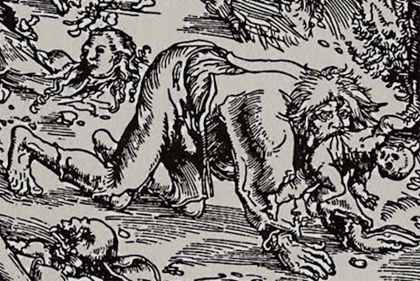 And now we come to the 17th century, which also has plenty of supposed cases of real werewolves. In 1603 the St. Severs district of Gascony, South-West France, experienced a spate of mysterious vanishings of children. An investigation was launched and witnesses began to paint a picture of a wolf-like, supernatural horror prowling the dim wilderness of the area. Several people claimed that they had been attacked by large wolves, and at around this time a 14-year-old boy named Jean Grenier supposedly told a girl that he was a werewolf and that he was a part of a whole pack of the creatures operating in the area, and when this got out he was arrested.
And now we come to the 17th century, which also has plenty of supposed cases of real werewolves. In 1603 the St. Severs district of Gascony, South-West France, experienced a spate of mysterious vanishings of children. An investigation was launched and witnesses began to paint a picture of a wolf-like, supernatural horror prowling the dim wilderness of the area. Several people claimed that they had been attacked by large wolves, and at around this time a 14-year-old boy named Jean Grenier supposedly told a girl that he was a werewolf and that he was a part of a whole pack of the creatures operating in the area, and when this got out he was arrested.
Upon questioning, Grenier readily admitted to what he was, and stated that he had a magical wolf skin that allowed him to make the transformation. The boy knew of many locations and times for the wolf attacks, and it was all very damning indeed, yet unbelievably he was shown mercy by the court and placed in the care of Franciscans at the friary of St Michael the Archangel, in Bordeaux. When a Pierre de Lancre visited him in 1610, Grenier was described as something less than human, with sharp teeth, long claws, and black, sunken eyes, and it was also noted that he would pace about his room on all fours. The friars would corroborate all of this and say the boy was much more animal than man, and that he would only eat raw meat. Sadly, Grenier would die in 1611 with no answer to the mystery.
Moving on to 1651 there is a case from Estonia (oddly, not France), where there was a scourge of slaughtered cattle and people attacked by a large wolf the size of a bear. An 18-year-old boy by the name of Hans was apprehended on suspicion of witchcraft, and he would explain that he was a werewolf against his will, cursed with the affliction after having been attacked and bitten one evening by a mysterious stranger dressed all in black, evidence of which he provided in the form of a ghastly scar left behind by the encounter. Interestingly, although there was absolutely no evidence whatsoever that he had committed any crime and despite his young age his confession was enough to get him executed for lycanthropy and witchcraft.
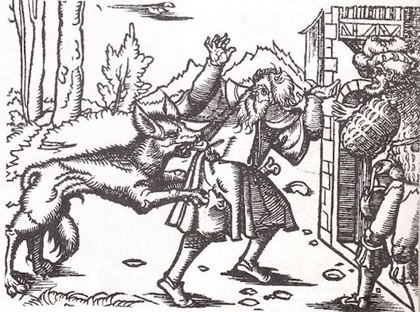 In 1685 another werewolf reared its head in Bavaria, at a place called Ansbach, where things began in the usual way with a spate of cattle mutilations and deaths. In no time farmers and herders were also being targeted by a sinister wolf, and it was widely thought that it was a werewolf. The creature was hunted down through the wilderness and eventually cornered, purportedly proving to be extremely hard to kill. When it was finally dead it did not turn back into a human, but was nevertheless dressed in human clothes and fitted with a wig in order to be victoriously paraded about town. It is most likely that this was actually just a wolf after all, but the legend of the Werewolf of Ansbach lives on.
In 1685 another werewolf reared its head in Bavaria, at a place called Ansbach, where things began in the usual way with a spate of cattle mutilations and deaths. In no time farmers and herders were also being targeted by a sinister wolf, and it was widely thought that it was a werewolf. The creature was hunted down through the wilderness and eventually cornered, purportedly proving to be extremely hard to kill. When it was finally dead it did not turn back into a human, but was nevertheless dressed in human clothes and fitted with a wig in order to be victoriously paraded about town. It is most likely that this was actually just a wolf after all, but the legend of the Werewolf of Ansbach lives on.
Later on in the 17th century we have the curious account of Thiess of Livonia, in Jürgensburg, Swedish Livonia. He would admit to having been a former werewolf during a trial during which he was a witness to a robbery. He said that his own transformation had occurred when he had drunk from the cup of a stranger who had claimed the contents would change him into a lycanthrope. He also gave many details of the lives of Livonian werewolves, such as that they changed three times a year, during which time they would kill livestock and roast it over a fire. The werewolves would also make excursions to Hell, where they would steal back all of the grain and livestock that the witches had taken during the year. Far from malevolent entities, Thiess would paint a picture of werewolves as benevolent servants of mankind, but this did not stop the court from having him flogged and banished from the church.
 The last entry here is a case from the 19th century, from Połomia, modern-day Poland. In 1849 there were some mysterious disappearances of children in the area, as well as sightings of a werewolf, and suspicions rest upon a beggar by the name of Swiatek. When the man’s home was searched there were found to be the remains of a young girl, her body parts in various stages of being prepared for a meal. When he was brought before a court, the beggar admitted to being a werewolf, and to have killed and eaten at least six people. Unfortunately, before he could be sentenced he killed himself by hanging in prison.
The last entry here is a case from the 19th century, from Połomia, modern-day Poland. In 1849 there were some mysterious disappearances of children in the area, as well as sightings of a werewolf, and suspicions rest upon a beggar by the name of Swiatek. When the man’s home was searched there were found to be the remains of a young girl, her body parts in various stages of being prepared for a meal. When he was brought before a court, the beggar admitted to being a werewolf, and to have killed and eaten at least six people. Unfortunately, before he could be sentenced he killed himself by hanging in prison.
What are we looking at in cases such as what we have seen here? Are these actual cases of werewolves or something else? There has been much debate to such things, and the most rational explanation is that these were disturbed individuals who hid their bloodlust behind the façade of myth and legend. In this theory this was just the savagery of people gone insane, perhaps really believing that they were mythical shape-changing creatures, but just normal human monsters. Yet what of the reports of actually seeing the wolves attack, or of having these individuals transform in full view? Is this just exaggeration and embellishment added over the years or the product of superstition? Perhaps. In the end these are historical cases with details that have faded over time, and it is quite likely we will never know the answers, but it does go to show that the allure with werewolves goes far back in time, and is shrouded in dark lore. Are these creatures in any way real, or do they merely prowl the landscape of the human imagination? I leave it for you to decide.
MU




















